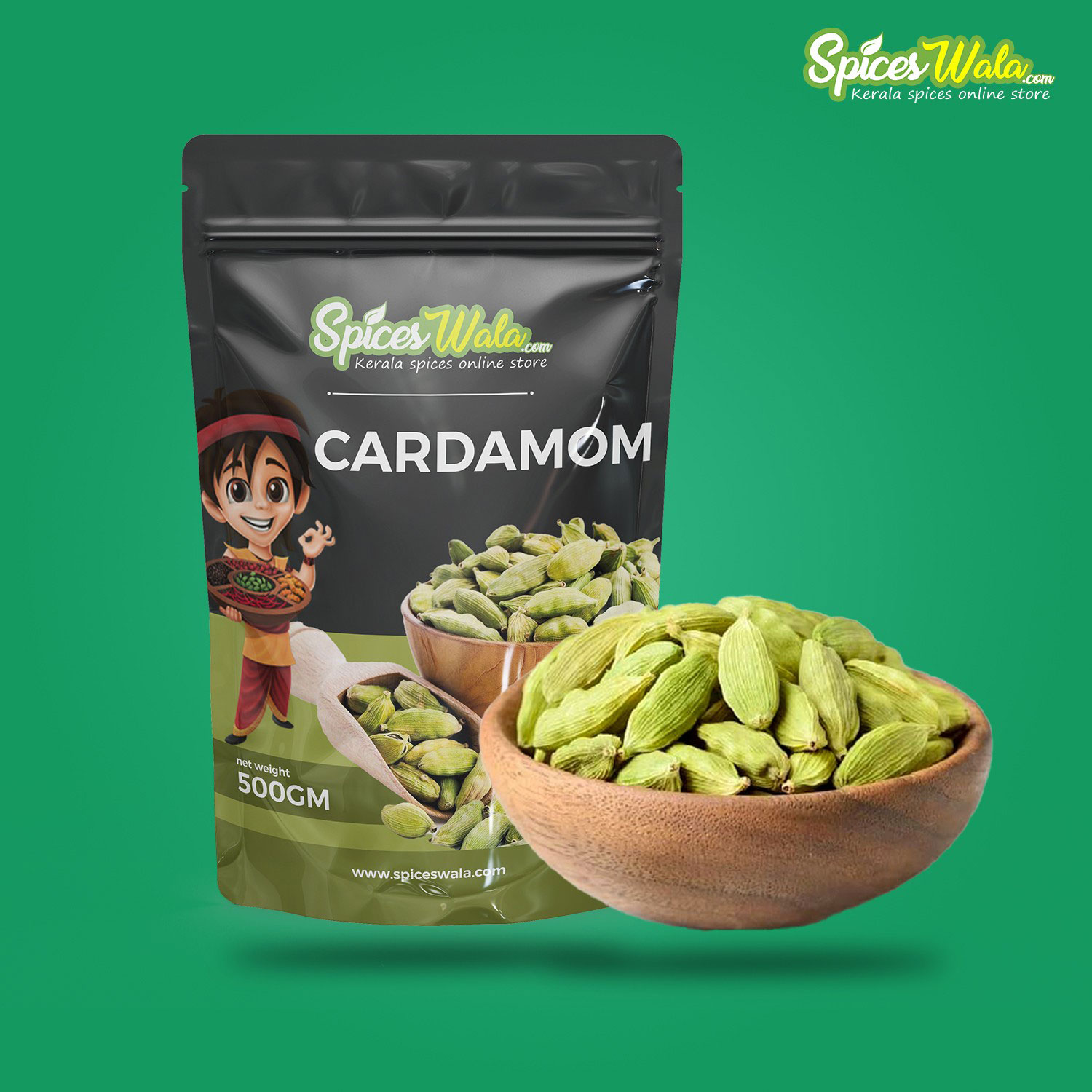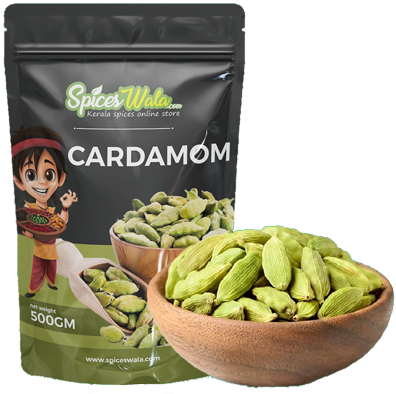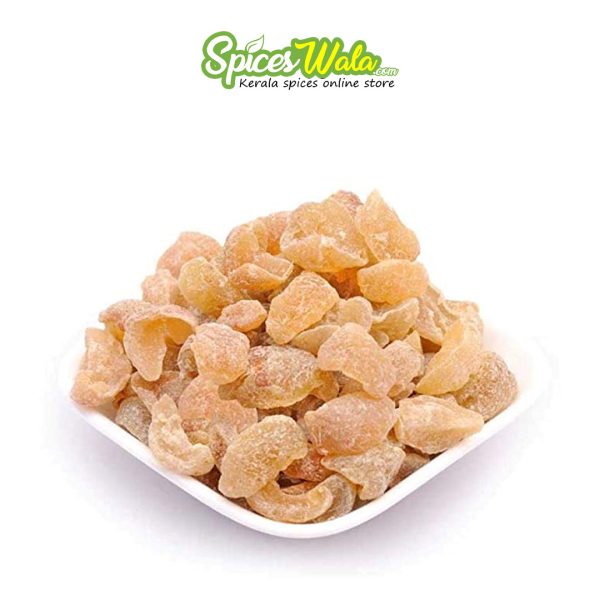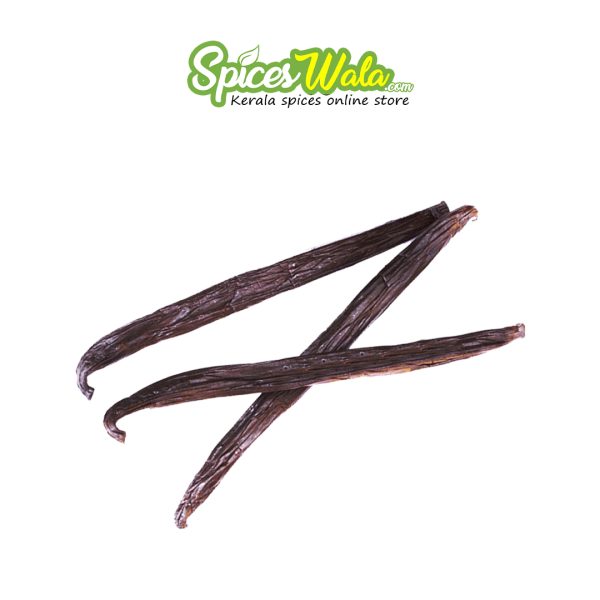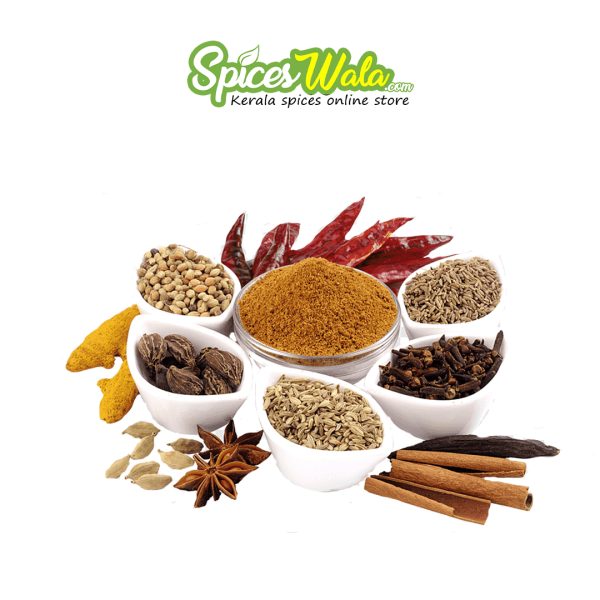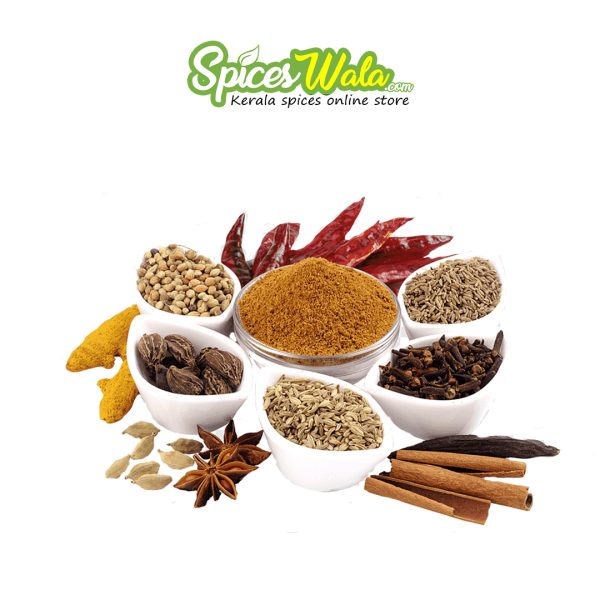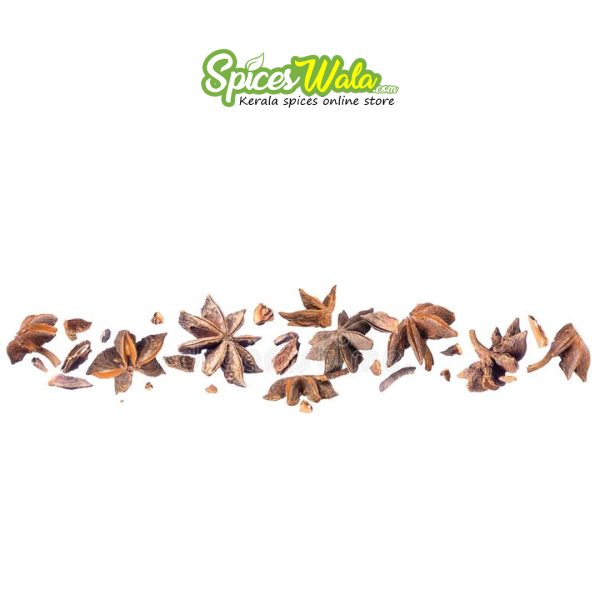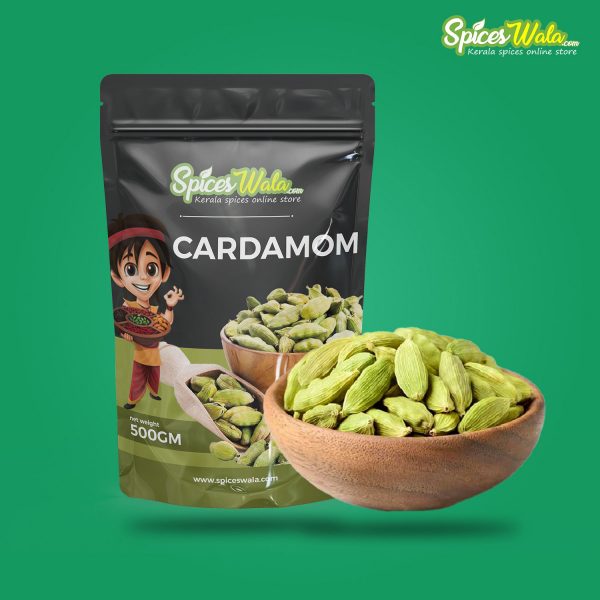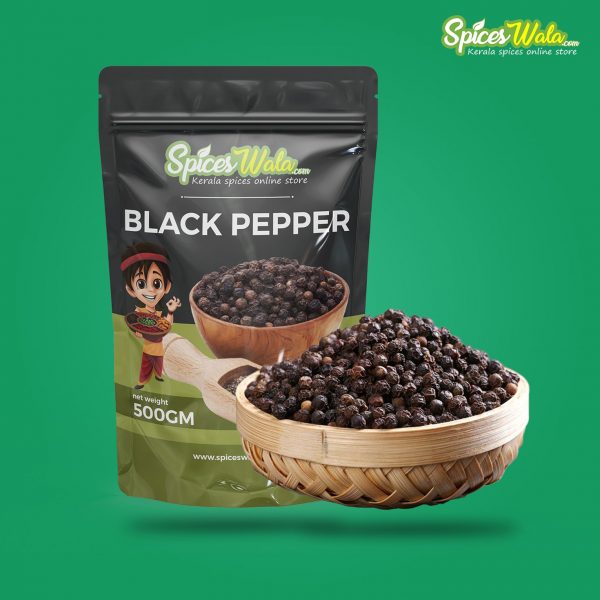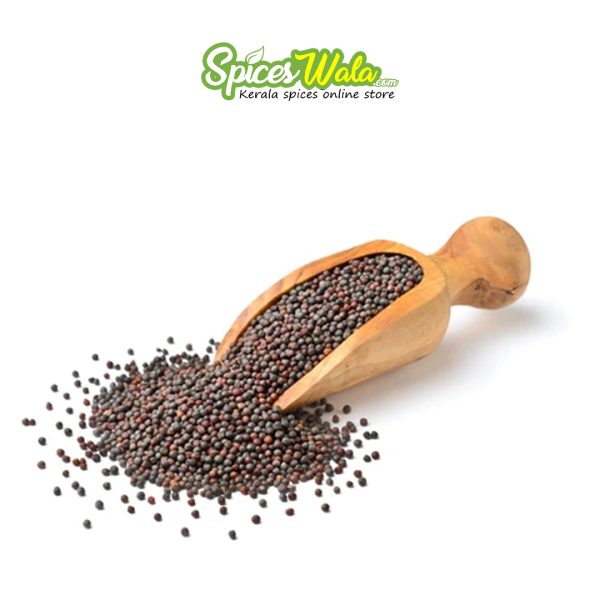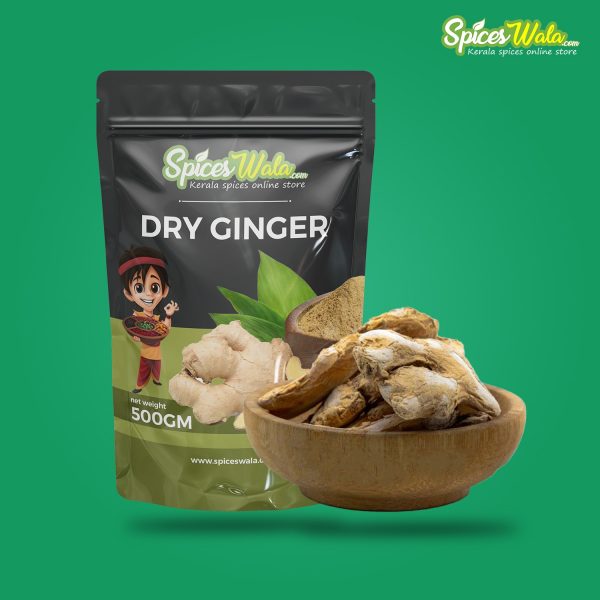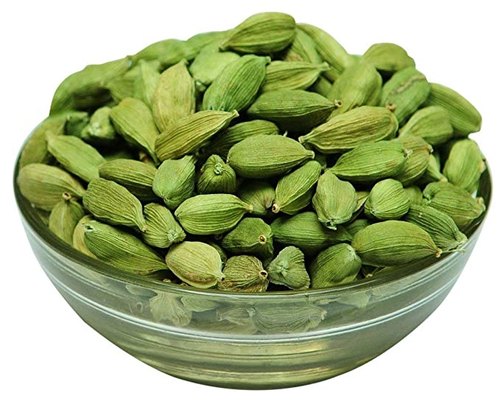Cardamom (/ˈkɑːrdəməm/), sometimes cardamon or cardamum,[1] is a spice made from the seeds of several plants in the genera Elettaria and Amomum in the family Zingiberaceae. Both genera are native to the Indian subcontinent and Indonesia. They are recognized by their small seed pods: triangular in cross-section and spindle-shaped, with a thin, papery outer shell and small, black seeds; Elettaria pods are light green and smaller, while Amomum pods are larger and dark brown.
Species used for cardamom are native throughout tropical and subtropical Asia. The first references to cardamom are found in Sumer, and in the Ayurvedic literatures of India.[2] Nowadays it is also cultivated in Guatemala, Malaysia, and Tanzania.[3] The German coffee planter Oscar Majus Klöffer introduced Indian cardamom to cultivation in Guatemala before World War I; by 2000, that country had become the biggest producer and exporter of cardamom in the world, followed by India.[4]

